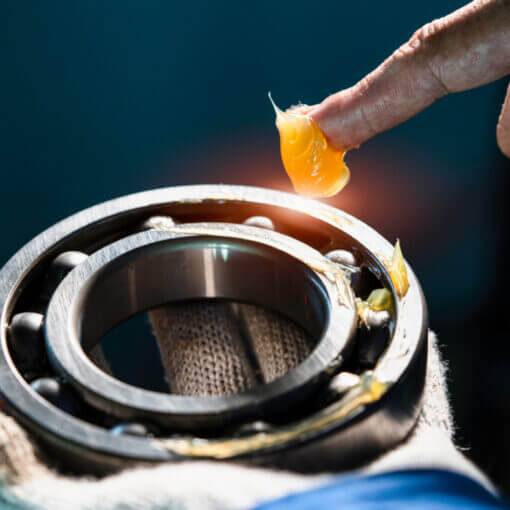There’s a common misconception that biodegradable lubricants cost more — that paying a bit less per gallon for traditional petroleum products means you’re being financially smart.
But that view only works if you ignore the real math. Once you factor in cleanup, downtime, and risk exposure, petroleum and synthetic oils start to look very expensive.
Let’s unpack why.
The Hidden Cost of Oil Spills
Oil spills don’t have to be catastrophic to be costly. A few hundred gallons of hydraulic fluid spilled on-site can easily trigger thousands in cleanup costs — not to mention equipment downtime, labor hours, and regulatory headaches.
EPA reporting requirements are getting tighter, and enforcement has followed suit. Whether it’s a leak from mobile equipment or a containment failure at your facility, the cost of oil spills extends far beyond the initial product loss.
Biodegradable lubricants dramatically reduce that exposure. Products like BioBlend’s readily biodegradable hydraulic fluids meet EPA standards and degrade naturally when exposed to air, water, or sunlight. This limits environmental impact and, in many cases, reduces fines or penalties in the event of a leak.
Think of it as built-in risk mitigation insurance.
Why “Price per Gallon” Isn’t the Whole Story
Petroleum and synthetic oils often look cheaper on paper. But paper doesn’t account for spill remediation, disposal, or brand damage when your name ends up in a compliance report.
That’s where the lower total cost of ownership (TCO) of biolubricants becomes clear.
When you use a high-performance biodegradable lubricant, you’re reducing:
- Cleanup and remediation costs
- Downtime from leaks and contamination
- Fines tied to environmental impact
- Long-term liability from soil or water pollution
The upfront cost per gallon? Practically irrelevant compared to the full lifecycle cost of using conventional fluids.
Performance Without Compromise
Early biolubes had performance issues, including limited stability, poor oxidation resistance, or short service life. That’s history.
Today’s bio-lubes, like BioBlend’s bio-synthetic and bio-canola products, meet or exceed the performance of traditional oils in viscosity stability, lubricity, and flash point. They also protect seals, hoses, and components with full compatibility across most equipment types.
In other words, bio-lube vs petroleum oil isn’t a trade-off anymore. It’s a technical upgrade and a sustainability win.
Lubricant Risk Mitigation That Pays for Itself
When you deploy biodegradable lubricants, you’re not just buying oil — you’re reducing risk.
A 250-gallon spill of conventional hydraulic fluid could easily exceed $40,000 in cleanup and remediation costs. The same spill using a biodegradable fluid? Closer to $1,000, often with no long-term environmental damage.
That difference protects your budget and your brand.
Because your customers (and regulators) notice which companies take proactive steps to operate responsibly.
The Smarter Business Case for Biodegradable Lubricants
Here’s the reality: the cost of lubricants used to grease your equipment is just the tip of the iceberg. The true cost lives in what happens after those fluids leave containment, whether through wear, leaks, or spills.
Switching to BioBlend’s biodegradable lubricants isn’t about being “green” for the sake of image. It’s about making data-driven, financially sound decisions that protect your equipment, your reputation, and your bottom line.
So, if you’re ready to make the switch to biodegradable lubricants, check out our full line of products, or contact a member of our team to learn more.

